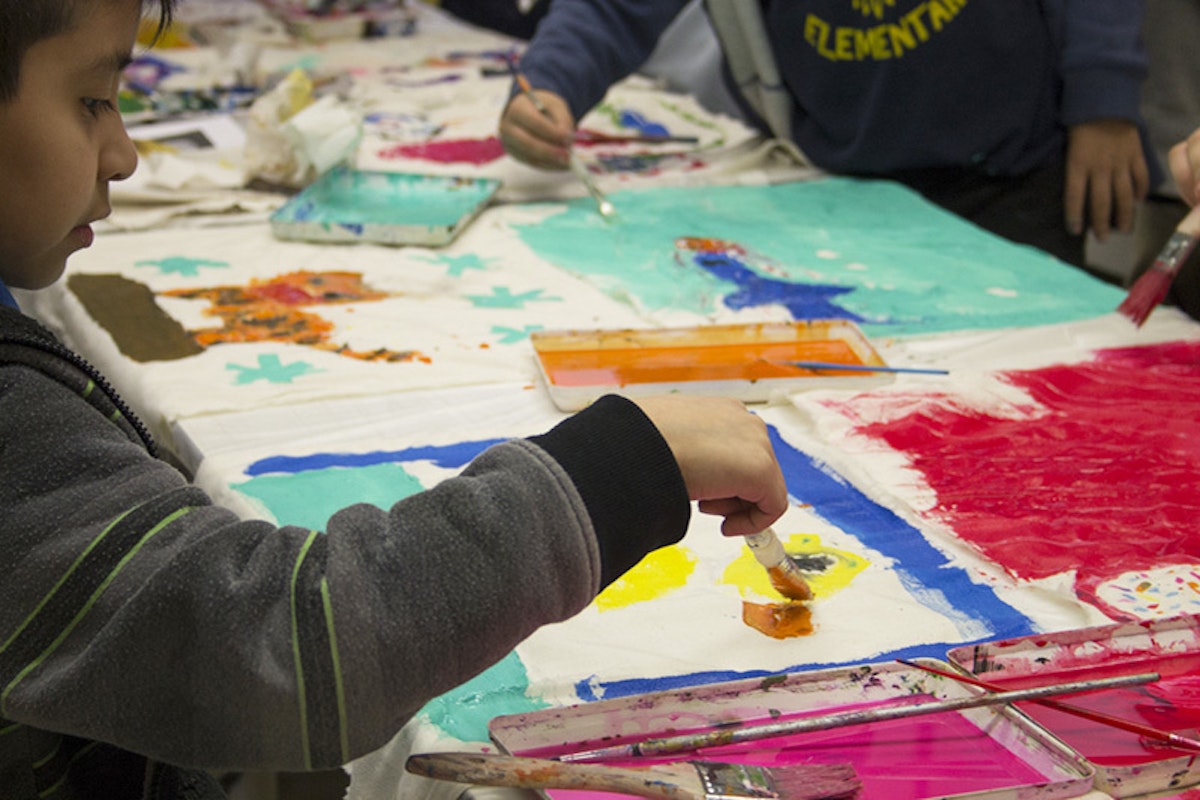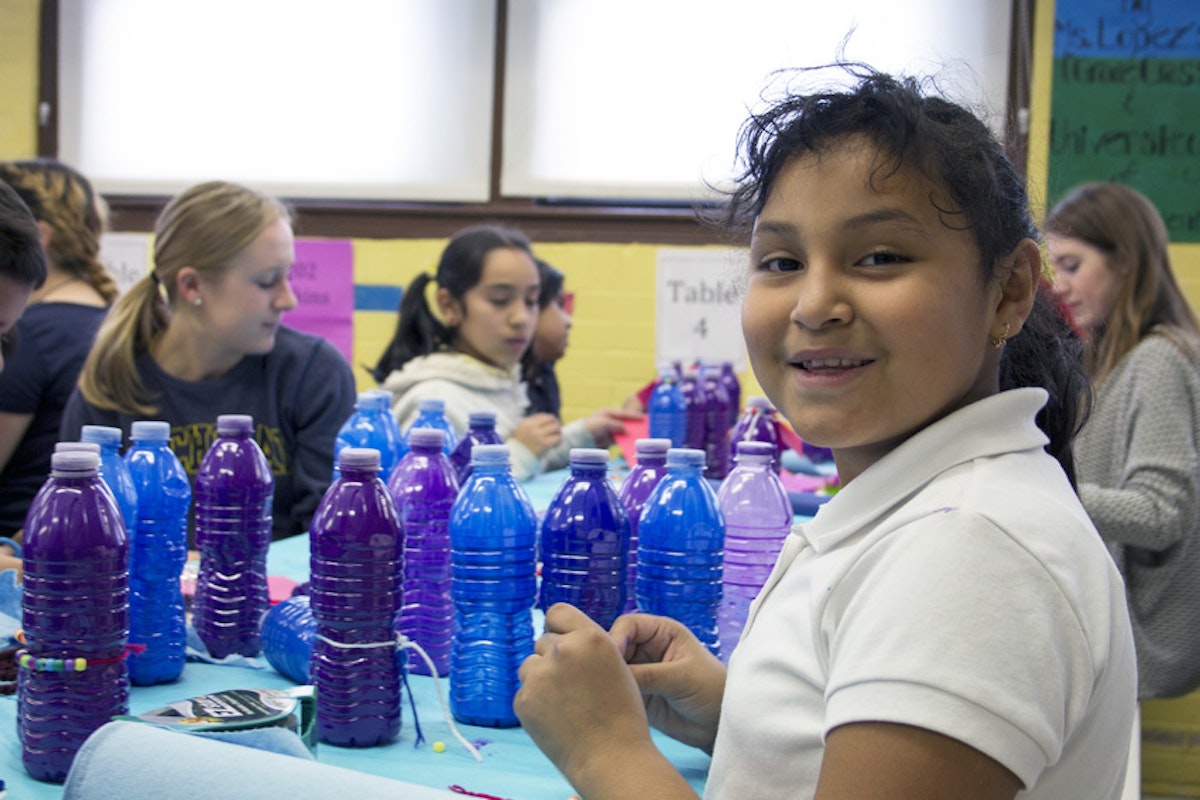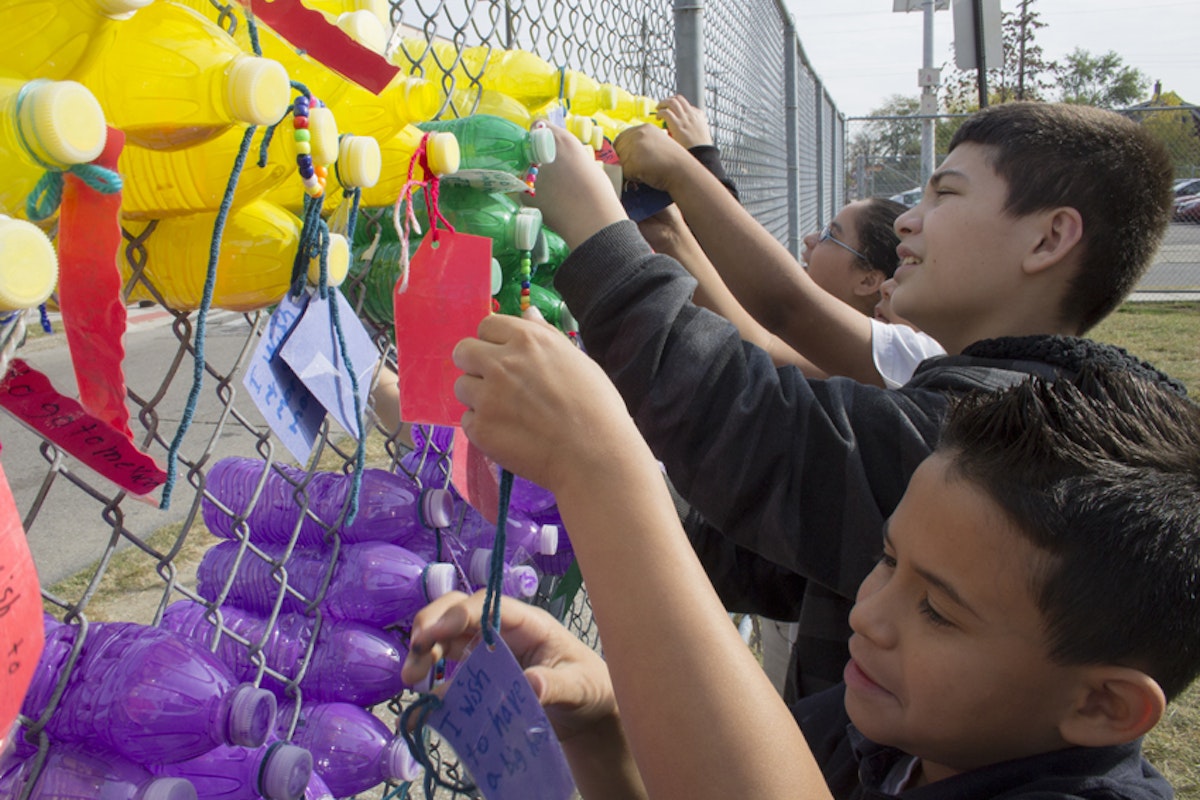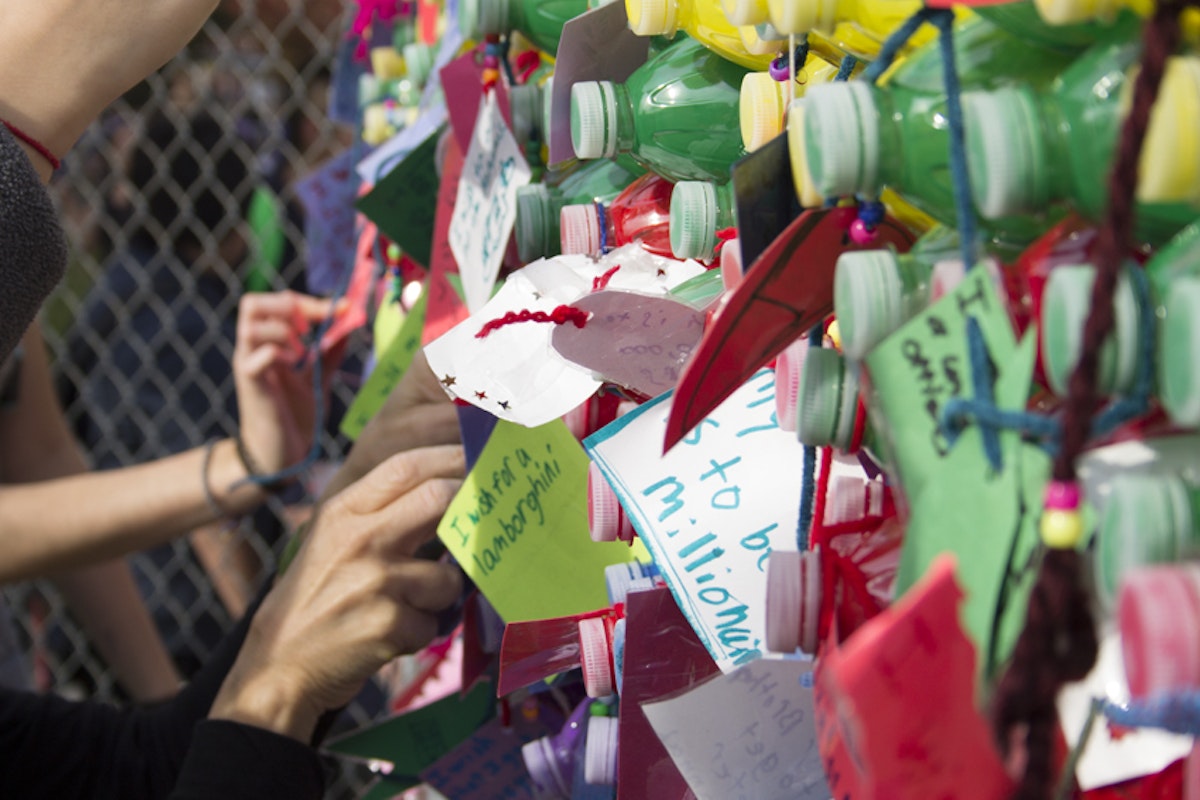The Wishing Fence
On a damp, drizzly day in October, eighteen Stamps students pile onto a Detroit-bound bus for a journey that will change them in ways they have yet to imagine.
This bus trip is a weekly occurrence for students enrolled in the Detroit Connections: In the Classroom course, one of many educational experiences that Stamps students can choose to fulfill their engagement coursework requirement.
As director of Detroit Connections from 2003 to 2005, Janie Paul, PH.D, led the development of the school's initial outreach program, building relationships with local community organizations and helping to launch new undergraduate classes that require Stamps students to work directly with members of the community. Today, those programs, along with many others, make up the school's Detroit Collaborations program.
“Community experience can be transformative for our students,” says Paul. “They not only learn what it means to be a teaching artist, they discover skills and parts of their psyche they didn't know about.”
“Through Detroit Connections, our students find they are more compassionate, more generous, and more aware of inequality.”
On this particular day, the class is heading to meet fourth graders at Bennett Elementary School in Southwest Detroit, a largely Hispanic community. The Stamps students will be leading an art workshop for two classes of 9- through 11-year-old children; something they will do every Wednesday for the entire semester.

This Detroit Connections course includes one day a week in a Stamps classroom and another at Bennett. To better understand the city and its residents, the students are also reading and discussing The Origins of the Urban Crisis: Race and Inequality in Postwar Detroit, by Thomas Sugrue.
“It's important if we're going into Detroit - where there are so many visual indicators of disruption - for students to have an understanding of how the city got there and why it's so segregated,” said lecturer Melanie Manos, a Detroit resident from 2000-2005 and Detroit Connections instructor since 2010. “It is an eye-opener for the students who struggle to understand how segregation and redlining was legal.”
Readings from Creative and Mental Growth by Viktor Lowenfeld and Inventing Kindergarten by Norman Brosterman provide direction on how to work creatively with children.

The project on this October day is a “Wishing Fence,” a colorful merger of two ideas that surfaced in the classroom, connecting one student's idea to create an installation around the school's chain-link fence and another student's wish to incorporate elements of Yoko Ono's “Wish Tree” series. A group of six Stamps students collaborated to work out the details, including the design, materials, and the process. The installation will be created from 300 painted water bottles inserted into the fence in a decorative design.
As the students travel towards Detroit, the project team goes over the process of the art installation. Manos asks questions to help the students see the process more clearly.
“Where will you stack the bottles after they have been painted?”
We can put them at the end of our work stations.
“Each of your children will have six bottles, so are you confident you will have room for 30 bottles to dry and for the kids to create their wishes?”
Maybe we should make a place for them on the unused lunchroom table.
As the bus makes its way towards Detroit, Manos continues to guide the students into reviewing their plan for the day's art workshop. The final leg of the trip takes the students through neighborhoods that date back to a time when Detroit was in its prime.
When they arrive at Bennett, the students file out, each knowing what needs to be done. Seven bins of supplies are carried from the bus, to the school, and down the stairs of the red brick building.
Inside a bright yellow school cafeteria, some students cover tables with colorful plastic tablecloths and set an art supply box at each workstation. Others work to create “spray bottles” to apply watered-down acrylic paint to the project. In addition to the spray bottles, the project requires each child to have six empty bottles, but as the Stamps students prep the project, it quickly becomes clear that there is a significant bottle shortage.
Manos realizes that a garbage bag of bottles is missing. “Has anyone seen the black bag of bottles? Does anyone remember putting it on the bus?”
The tension is palpable as the students realize they may not have everything needed to do the Wishing Fence installation. Preparation inside the cafeteria continues with a sense of nervousness. A few minutes later, Manos carries in the large bag of bottles like Santa carrying his sack. A huge sigh of relief. But that relief is short lived when the bag is empty and several stations still don't have any bottles.
While the Stamps students try to figure out what to do, the joyful chatter of children's voices indicate that the fourth graders are lining up outside the cafeteria. Manos points out that bottles used to share the paint at each table are creating the deficit. After quick discussion among the students, a reduction is made to just five bottles for each child. Crisis averted.
As uncomfortable this moment is, it represents a critical component of the Detroit Connections class: thinking on your feet. “This class provides Stamps students with opportunities to put planning into practice in a high-stakes, real-world environment in which they work one-on-one with fourth graders.” says Manos. “The real-time troubleshooting that happens as part of our activities helps Stamps students get comfortable with improvisation and adaptability - invaluable 21st-century skills for the art studio and beyond.”

The children's voices crescendo excitedly as Manos invites them into the room. Pure enthusiasm takes hold as more than fifty children run to their art stations with noisy glee.
“The children love their time with the U-M students,” remarks Thomas Cieslik, fourth grade teacher at Bennett. “With all the budget cuts, we don't have art classes anymore. This collaboration with the Stamps school is a welcomed opportunity.”
Emphasizing the collaborative nature of the partnership, Manos expresses appreciation for Bennett's willingness to have Stamps students “learn by doing” as they conduct art workshops for the fourth graders:
“An artist is nothing without a space and community to work in.”
After the fourth-graders settle down, Stamps student leaders Mia Massimino (BFA '17) and Joo Hyun Yu (BA '15) explain to the children that they are going to create an art installation on their school fence. One child speaks up and asks if they can take their artwork home with them, and is disappointed when told not this time. But when Mia further explains that an installation is something every child, teacher, and parent will see when they come to Bennett, he gets excited about being part of something so important.

Stamps students, broken up into pairs, have five or six children to work with. They squirt paint into the empty bottles and screw the caps back on. As the children shake the bottles – many of them getting up to jump or dance – bright red, yellow, green, blue, or purple cover the walls inside the empty bottles. The activity serves as a metaphor for the way this weekly art workshop adds color to the lives of these children. With the bottles set aside to dry, the children are instructed to write a wish on construction paper.
“My students thought long and hard. Some students made multiple wishes and some just made one. Some serious and some goofy,” said a Stamps student on the class Tumblr blog. “Their wishes ranged from I wish to own a fish to When I die I wish to go to heaven.”
Wishes and bottles complete, the children and their Stamps project leaders march outside to the school fence to install the project. No longer drizzling, it is now a sunny fall day.

With the installation design clearly marked with tape on the fence, students have a clear idea of where to insert their colored bottles; after the bottles are incorporated into the fence, students tie their wishes to them.
“Once the kids got out there and saw the fence and the design, everyone was so excited to place the bottles they had worked on into the larger design,” noted Massimino.
As the school day winds to a close and parents stop by to compliment the project, the students' smiles are nearly as bright as the fence itself. Usually, fences are erected to create boundaries, barriers, and restrictions. But in the hands of the Detroit Connections team, the fence at Bennett truly became a space for collaboration, community pride, and our deepest wishes. Side-by-side, the group beamed with pride in themselves, in each other, and in their community. This is the journey that Stamps students couldn't have anticipated, and one that will continue long after the semester ends.

Story by Lori Dick.